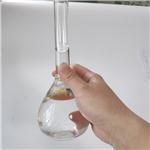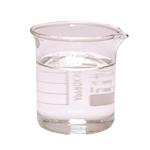2-methyl butyric acid has a pungent, acrid odor which is similar to Roquefort cheese with an acrid taste. At low dilutions, it has a pleasant fruity taste. It can be prepared either by decarboxylation of methyl ethyl malonic acid or by the oxidation of fermentation amyl alcohol (fusel oil). It is used as a flavor ingredient for butter, cream, cheese flavor deployment. It also provides acyl moiety for the preparation of the respective flavor esters.
[1] George A. Burdock, Encyclopedia of Food and Color Additives, Band 1, 1996
[2] T. Tachihara, H. Hashimoto, S. Ishizaki, T. Komai, A. Fujita, M. Ishikawa and T. Kitahara, Microbial resolution of 2-methylbutyric acid and its application to several chiral flavour compounds, Developments in Food Science, 2006, vol. 43, 97-100
2-Methylbutyric acid has a pungent, acrid odor similar to Roquefort cheese with an acrid taste. At low dilutions, it has a pleasant
fruity taste. May be prepared by decarboxylation of methyl ethyl
malonic acid (with heat); also by oxidation of fermentation amyl
alcohol (fusel oil).
2-Methylbutyric acid has a pungent, acrid odor similar to Roquefort cheese with an acrid taste. At low dilutions, it has a pleasant, fruity taste. Slightly soluble in water, soluble in alcohol and oils. Also soluble in Propylene glycol and poorly soluble in Glycerin.
clear colorless to pale yellowish liquid
Occurring as the d-, l-, and dl-isomers; the racemic form has been reported found in angelica root oil and cof�fee; the d-isomer in the ester form has been identified in lavender oil. Also reported found in apple, apricot, berries, grapes, papaya,
peach, guava, pineapple, potato, bell pepper, tomato, peppermint and spearmint oil, vinegar, wheat breads, cheeses, chicken, mutton,
pork, hop oil, beer, cognac, rum, whiskies, cider, cocoa, coffee, tea, peanuts, passion fruit, trassi, mango, plum, tamarind, rice, corn
oil, loquat, scallops, Chinese quince, maté, mammee apple and Roman chamomile oil, cranberry, grape brandy, oriental tobacco,
and strawberry
2-Methylbutyric acid was used in the synthesis of 2-methylbutyric anhydride, an acylating agent.
2-Methylbutyric acid, can be used as food additive for butter, cream, cheese flavor deployment. It is an important raw material and intermediate used in Organic Synthesis, Pharmaceuticals, Agrochemicals and Dyestuff. It is also used in the synthesis of 2-methylbutyric anhydride.
By decarboxylation of methyl ethyl malonic acid (with heat); also by oxidation of fermentation amyl alcohol (fusel oil).
ChEBI: A methylbutyric acid comprising a butyric acid core carrying a 2-methyl substituent. Produced from amino acid leucine during nutrient starvation in bacteria.
Detection: 10 to 60 ppb. Aroma characteristics at 1.0%: acidic sour, pungent, ripe fruit leather, lingon�berry, dirty cheesy, fermented pineapple fruity with a woody nuance
Taste characteristics at 10 ppm: dirty, acidic sour, ripe fruity, with a dairy buttery and cheesy nuance
Enantioselective esterification of (+/-)-2-methylbutynic acid catalyzed by Chromobacterium viscosum lipase immobilized in microemulsion-based organogels has been investigated.
Flammability and Explosibility
Not classified



